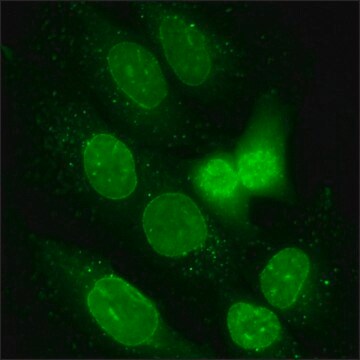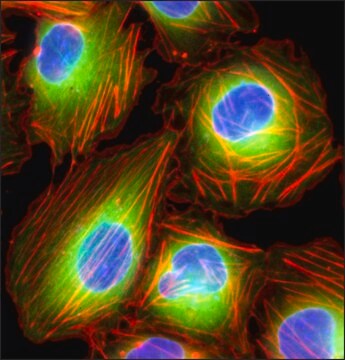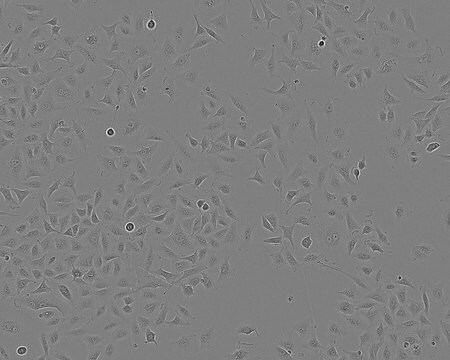U-2 OS Cell Line human
NOTE: Both the cell line and DNA from the cell line may be available for this product. Please choose -1VL or VIAL for cells, or -DNA-5UG for DNA, 92022711, human bone, Not specified
Synonym(e):
U-2OS Cells, U2-OS Cells, U20S Cells, U2OS Cells
About This Item
Empfohlene Produkte
Biologische Quelle
human bone
Verpackung
tube of 5 μg 92022711-DNA-5UG
pkg of vial of cells 92022711-1VL
Wachstumsmodus
Adherent
Karyotyp
Not specified
Morphologie
Not specified
Produkte
Not specified
Rezeptoren
Not specified
Methode(n)
cell culture | mammalian: suitable
Relevante Krankheit(en)
cancer
Versandbedingung
dry ice
Lagertemp.
−196°C
Ursprung der Zelllinie
Beschreibung der Zelllinie
Anwendung
- the importance of cyclin D1 for the activity of lithocholic acid hydroxyamide (LCAHA)
- the interaction of human single-stranded DNA binding protein 1 (hSSB1) with bloom syndrome protein helicase (BLM helicase)
- calcium-mediated actin reset (CaAR) in response to physiological changes
DNA-Profil
CSF1PO: 13
D13S317: 13
D16S539: 11,12
D5S818: 11
D7S820: 11,12
THO1: 6,9.3
TPOX: 11,12
vWA: 14,18
Nährmedium
Subkultur-Routine
Sonstige Hinweise
Hier finden Sie alle aktuellen Versionen:
Analysenzertifikate (COA)
It looks like we've run into a problem, but you can still download Certificates of Analysis from our Dokumente section.
Wenn Sie Hilfe benötigen, wenden Sie sich bitte an Kundensupport
Besitzen Sie dieses Produkt bereits?
In der Dokumentenbibliothek finden Sie die Dokumentation zu den Produkten, die Sie kürzlich erworben haben.
Artikel
Regulation of the cell cycle involves processes crucial to the survival of a cell, including the detection and repair of genetic damage as well as the prevention of uncontrolled cell division associated with cancer. The cell cycle is a four-stage process in which the cell 1) increases in size (G1-stage), 2) copies its DNA (synthesis, S-stage), 3) prepares to divide (G2-stage), and 4) divides (mitosis, M-stage). Due to their anionic nature, nucleoside triphosphates (NTPs), the building blocks of both RNA and DNA, do not permeate cell membranes.
Unser Team von Wissenschaftlern verfügt über Erfahrung in allen Forschungsbereichen einschließlich Life Science, Materialwissenschaften, chemischer Synthese, Chromatographie, Analytik und vielen mehr..
Setzen Sie sich mit dem technischen Dienst in Verbindung.


